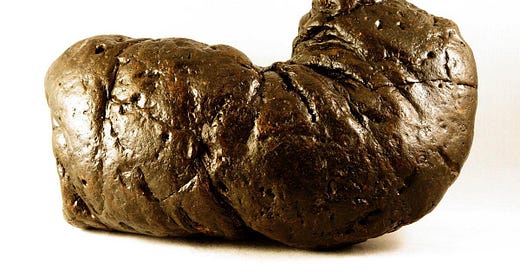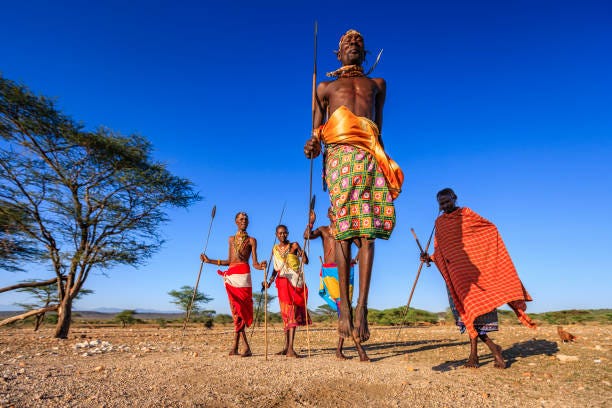There has been lots of very reasonable talk about the dangers and limited effectiveness of statins going round on social media. However, this has been used by the animal ag industry in an attempt to rehabilitate cholesterol, saturated fat and animal products. The $trillion first 2 weeks of weight loss (of water and a disproportionate amount of lean muscle tissue) on a keto diet also gets people confused about what is healthy. The fact that any weight loss, however it was attained, from a heron addiction or keto diet, will initially improve biomarkers makes a high animal product diet appear attractive to the undiscerning.
Internet advisors are now saying that sky high cholesterol, brain fog, fainting, skin complaints and even having a stroke on a carnivore diet is all part of the fun (thankfully the stroke sufferer in the video is now on a plant based diet).
Statins are harmful and useless, don’t take them. However, much of the pro-cholesterol advice to eat the ‘nose to anus’ of animals plus the rest of the bull’s shit that’s being fed to the open mouths at health freedom is coming from the farming industry funded Weston A Price foundation.
I'd rather be in perpetual slavery and controlled by ‘globalists’, with all the other vegans and environmentalists than living in freedom with those who mock people showing compassion to animals but here is a quick look at the very poor evidence being used for the alleged health benefits of eating animal products, even organic, grass-fed ones, from the scientific perspective.
The industry funded Weston A Price Foundation says ‘The Eskimo (now called Inuit or Yupik) diet, composed largely of fish, fish roe and marine animals, including seal oil and blubber (though it also included berries, seaweed and plants) allowed Eskimo mothers to produce one sturdy baby after another without suffering any health problems’
This is all myth, hearsay, wishful thinking and hearing what you want to hear from Weston A Price. The ‘Eskimo’ mother’s lifestyle has changed considerably but historically the fish-eating Inuit in the 1800s actually only had a life expectancy of 43.5 years (which excluded infant mortality 1-4 years of age). Re-analysis of 1970s data shows that they had as much heart disease and atherosclerosis and worse osteoporosis and bone density than the surrounding populations. Contrary to our sedentary lifestyles the Inuits would also have burnt thousands of calories from fat in digging ice and from shivering to keep warm. Yes, they have high saturated fat intake but the enormous energy expenditure protects them from putting on weight, which protects from the spill over effect of body fat on insulin resistance and they avoid T2 diabetes. Studies in the 1950s and 1960s did not account for this when comparing CVD in Inuit populations (who also tend to die younger, ie before they can develop symptoms) with surrounding populations of more sedentary people. Studies also do not account for the fact that junk food, that the Inuit now consume, along with more sedentary lifestyles and with resultant increases in weight and CVD, also contains large amounts of saturated fat.
From the American Journal of Clinical Nutrition. ‘After age 40 the Eskimos of both sexes had a deficit (of bone density) of from 10 to 15% relative to white standards. Aging bone loss, which occurs in many populations, has an earlier onset and greater intensity in the Eskimos. Nutritional factors of high protein, high nitrogen, high phosphorus, and low calcium intakes may be implicated.’
From the 2014 re-analysis of the data in “Fishing” for the Origins of the “Eskimos and Heart Disease” Story: Facts or Wishful Thinking? in the Canadian Journal of Cardiology; ‘During the 1970s, 2 Danish investigators, Bang and Dyerberg, on being informed that the Greenland Eskimos had a low prevalence of coronary artery disease (CAD) set out to study the diet of this population. Bang and Dyerberg described the “Eskimo diet” as consisting of large amounts of seal and whale blubber (ie, fats of animal origin) and suggested that this diet was a key factor in the alleged low incidence of CAD.
This was the beginning of a proliferation of studies that focused on the cardioprotective effects of the “Eskimo diet.” In view of data, which accumulated on this topic during the past 40 years, we conducted a review of published literature to examine whether mortality and morbidity due to CAD are indeed lower in Eskimo/Inuit populations compared with their Caucasian counterparts. Most studies found that the Greenland Eskimos and the Canadian and Alaskan Inuit have CAD as often as the non-Eskimo populations.
Notably, Bang and Dyerberg's studies from the 1970s did not investigate the prevalence of CAD in this population; however, their reports are still routinely cited as evidence for the cardioprotective effect of the “Eskimo diet. We discuss the possible motives leading to the misinterpretation of these seminal studies.”
These motives were…money. ‘Recently, 2 meta-analyses and a well conducted randomized controlled trial reported ambiguous or negative results regarding the cardioprotective benefits of Ω-3 fatty acids. Nutritional guidelines in Canada, the United States, and Europe encourage the dietary intake of fish and Ω-3 as part of a preventive approach toward CAD and overall heart health. The American Heart Association recommends eating fish (particularly fatty fish) at least 2 times (2 servings) a week. Similarly, the European Society of Cardiology-European Society of Hypertension 2013 guidelines advise patients with hypertension to eat fish at least twice a week. Although the evidence for these recommendations is unclear, it is estimated that in the United States approximately 11 million adults and close to half a million children consume fish oil capsules.
To date, more than 5000 articles have been published on the alleged beneficial properties of Ω-3 fatty acids, and the billion dollar industry producing and selling fish oil capsules, based on a hypothesis that was questionable from the beginning.
“Man prefers to believe what he prefers to be true.”
—Francis Bacon
WAP then goes on to talk about Africans. The website says ‘African cattle-keeping tribes like the Masai consumed no plant foods at all–just meat, blood and milk.” Say what?!
For a start why should that be attractive, yuck? I’ll sink my teeth into a juicy pear and have a satisfying bowl of beans thanks. And how do they know the Masai were eating no wild plants or fruit? The article is unreferenced. No comment is made as to how long the Masai lived and how healthy they were.
The life expectancy of a Masai woman is apparently 45 years (though of course child birth deaths may contribute to this though it shows that the diet’s long term effects over 45 years of age has not yet been established). And of course they couldn’t live without consuming some plants.
‘Of course blood and milk aren’t the only things Maasai eat; the diet has always been supplemented with tubers, honey, and foraged plants (and now also with maize) that are most often used in soups and stews.’
The Masai had incredibly high energy expenditures, burning thousands of calories, in a completely different league to todays sedentary lifestyle, even if they include a couple of hours in the gym, so the potentially atherogenic diet among the Masai was not reflected in serum lipids: offset by the very high energy expenditure levels and low body weight. Again the enormous energy expenditure protects from the negative effect of consuming saturated fat on blood lipids and body fat causing insulin resistance.
The Masai were not eating the milk, blood and dead animal diet for their whole lives, indeed it may be only a ceremonial diet for boys coming of age, with the women, especially went pregnant, eating a largely vegetarian diet. Periods of extended famine were also inevitable, though I don’t see Weston A Price recommending these. Variations in the diet occurred with the seasons and the fat content of cow’s milk also varied greatly depending on what they were grazing on. Extended periods of low calories and lower fat intake would also help explain any unexpectedly low cholesterol level in the Masai.
It was also found that the Masai had adapted to the diet, showing genetic changes, and were able to suppress their endogenous cholesterol production to keep atherogenic cholesterol levels lower.
The fact that the Masai may have adapted to a predominately animal based diet, though even the fact that it is predominately animal based is very uncertain, with periods of famine, periods when the fat content was lower and periods were they may have relied on plants does not mean that this is a healthy diet, nor is it optimal for us! They were helped in that they expended vast amounts of calories in physical activity, much more that we do today, had low weight so that lipids were not absorbed back into the blood stream from body fat and were able to naturally suppress their endogenous production to lower levels of artery damaging cholesterol: yet they still seem to have short life expectancies.
Moving on from the misleading comments about the Inuits and the lies about the Masai: of course WAP is right about refined sugar, flour and oil being unhealthy. D’ah. However, there is evidence that animal products caused poor health prior to the introduction of refined products and junk food. Studies on ‘mummies’ (therefore pre-jam and pre-peanut butter: the cause of poor health according to Weston A Price) show that these populations had osteoporosis as well as atherosclerosis. From the Lancet ‘Atherosclerosis was common in four preindustrial populations including pre-agricultural hunter-gatherers’.
For 90% of the 25 million years of human evolution we ate like other primates do ie 95% plants, mostly fruit. Our physiology was little affected by the last 2.5 million years of hunter gathering when we still ate a lot of fibre and a little amount of lean meat: paleopoop shows that hunter gatherers consumed 70-150 grams of fibre a day (wild plants have about four times more fibre than commercial ones).
The other diets WAP mentions, such as the Mediterranean, which contain animal products but also large amounts of wholegrains, fruits, vegetables and legumes do not show that these diets are healthy because of the animal products: they may well be healthy despite them.
Some people, with very large energy expenditures, may have adapted to be able to live to 45 years of age, though still living with atherosclerosis, osteoporosis and bone density problems, by eating a higher percentage of animal protein and fat, though of course still eating lots of plant foods. This does not mean that eating any animal product in the diet, let alone getting all calories from animal sources, compounded by our sedentary lifestyles, is in any way advisable. It couldn’t be further from good advice.
🐒







yeah, it is really sad that there are so many brilliant people in this Weston Price group, who do great work where terrain theory, and the nonsense of viruses is concerned, but then they stick to this legacy garbage on nutrition.
"I'd rather be in perpetual slavery and controlled by the globalists, with all the other vegans and environmentalists than living in freedom with those who mock people showing compassion to animals or with the insufferable, heartless, self-justifying, scientifically illiterate, environmental destruction denying, puffed up and entitled keto/paleo/hunting for these who can afford it/carnivore preachers in the MFM."
Agree 100%. Me too.